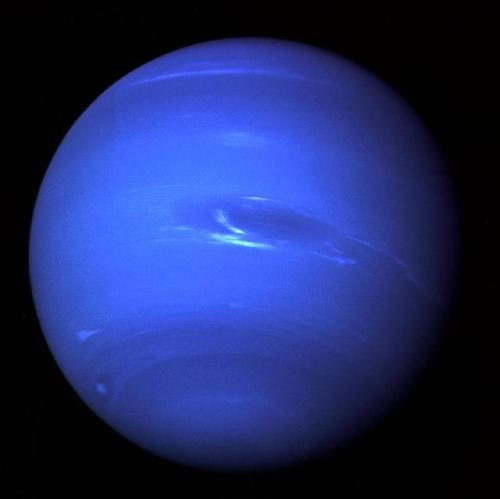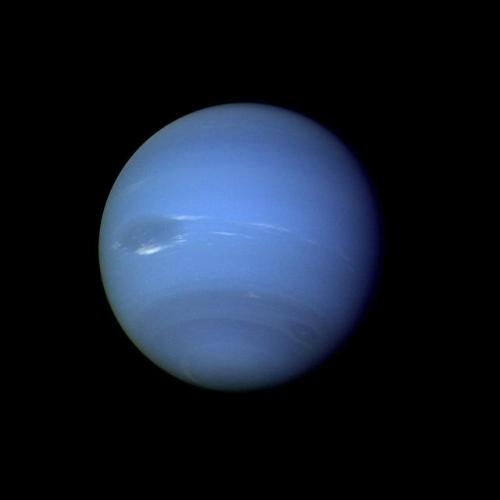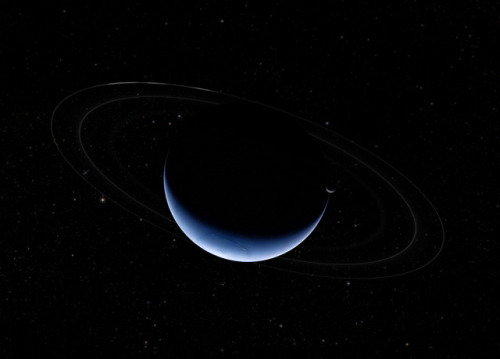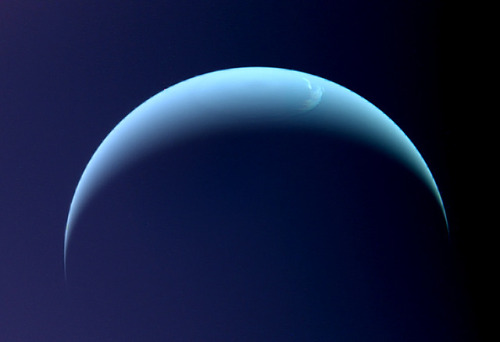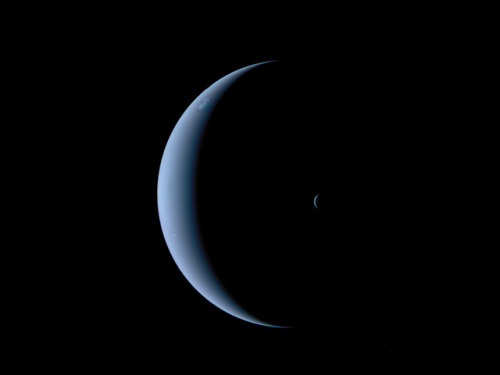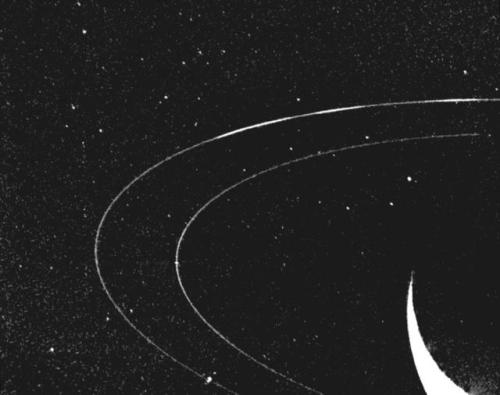astronomyblog: Neptune ♆ On this day in 1846 was discovered the planet Neptune.The ice giant
astronomyblog: Neptune ♆ On this day in 1846 was discovered the planet Neptune. The ice giant Neptune was the first planet located through mathematical predictions rather than through regular observations of the sky. (Galileo had recorded it as a fixed star during observations with his small telescope in 1612 and 1613.) When Uranus didn’t travel exactly as astronomers expected it to, a French mathematician, Urbain Joseph Le Verrier, proposed the position and mass of another as yet unknown planet that could cause the observed changes to Uranus’ orbit. After being ignored by French astronomers, Le Verrier sent his predictions to Johann Gottfried Galle at the Berlin Observatory, who found Neptune on his first night of searching in 1846. Seventeen days later, its largest moon, Triton, was also discovered. Neptune is invisible to the naked eye because of its extreme distance from Earth. Interestingly, the highly eccentric orbit of the dwarf planet Pluto brings Pluto inside Neptune’s orbit for a 20-year period out of every 248 Earth years. Pluto can never crash into Neptune, though, because for every three laps Neptune takes around the Sun, Pluto makes two. This repeating pattern prevents close approaches of the two bodies. Nearly 4.5 billion kilometers (2.8 billion miles) from the Sun, Neptune orbits the Sun once every 165 years. Uranus’ blue-green color is also the result of atmospheric methane, but Neptune is a more vivid, brighter blue, so there must be an unknown component that causes the more intense color. Despite its great distance and low energy input from the Sun, Neptune’s winds can be three times stronger than Jupiter’s and nine times stronger than Earth’s. Winds on Neptune travel faster than the speed of sound. In 1989, Voyager 2 tracked a large, oval-shaped, dark storm in Neptune’s southern hemisphere. This “Great Dark Spot” was large enough to contain the entire Earth. Neptune has five known rings. Voyager 2’s observations confirmed that these unusual rings are not uniform but have four thick regions (clumps of dust) called arcs. The rings are thought to be relatively young and short-lived. Neptune has 14 known moons, six of which were discovered by Voyager 2. Triton, Neptune’s largest moon, orbits the planet in the opposite direction compared with the rest of the moons, suggesting that it may have been captured by Neptune in the distant past. To know more about the planet Neptune click here and here. Images credit: NASA/JPL- Caltech (some images processed by Kevin M. Gill) -- source link
Tumblr Blog : wonders-of-the-cosmos.tumblr.com
